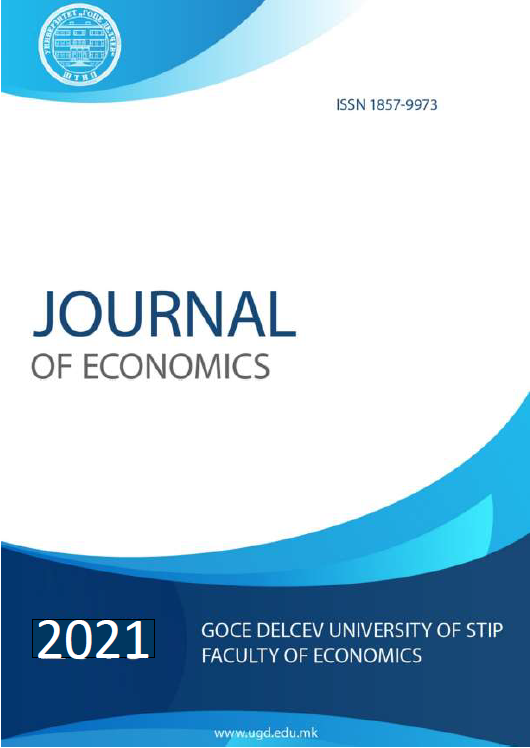Analysis of the trade relations between the Republic of North Macedonia and Great Britain
DOI:
https://doi.org/10.46763/JOE216.2009mkKeywords:
Competitiveness, Revealed comparative advantage, TradeAbstract
This paper’s goal is to identify the sectors in which the Republic of North Macedonia has a comparative advantage in terms of its trade relations with Great Britain. Both Revealed Comparative Advantage and Revealed Symmetric Comparative Advantage methodologies had been used in the empirical analysis made during the time period of 2009-2019. The results of the analysis point to the fact that the Republic of North Macedonia had a continuous comparative advantage in the category of miscellaneous manufactured articles in the course of the analysed period, which was mainly resulting from the export of clothes and other linen things, and it was also present in the category of crude materials, except fuel owing to the export of metal ore including metal-containing residues. In 2010, it was evidenced a comparative advantage in the category of chemical products. According to Hinloopen and Marrewijk classifications, the calculated comparative advantage of the Macedonian export in the British market varies from weak to moderate whereas, in the course of two time periods (2010 and 2013), it was evidenced a strong comparative advantage in the category of crude materials, except fuel.


